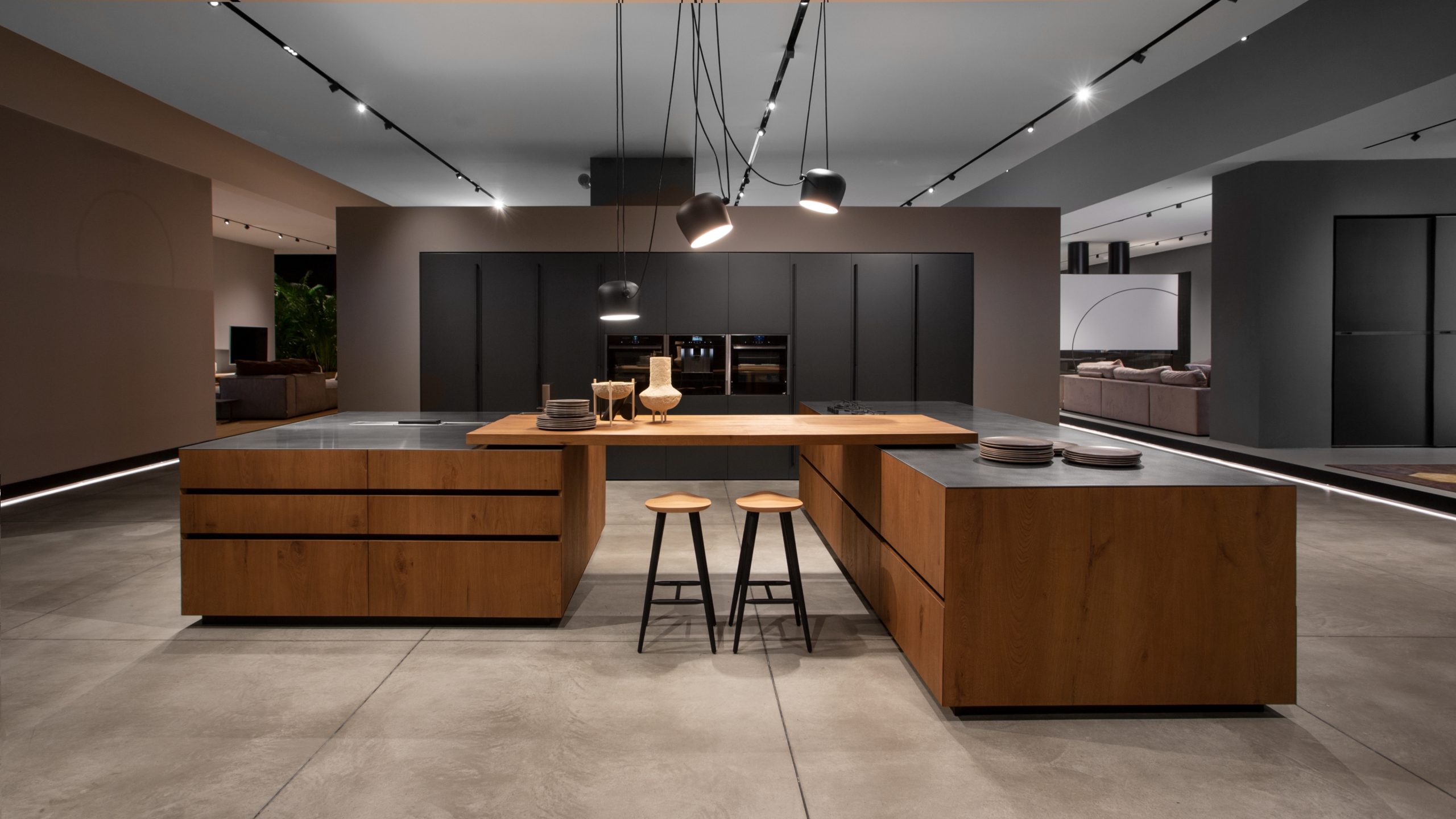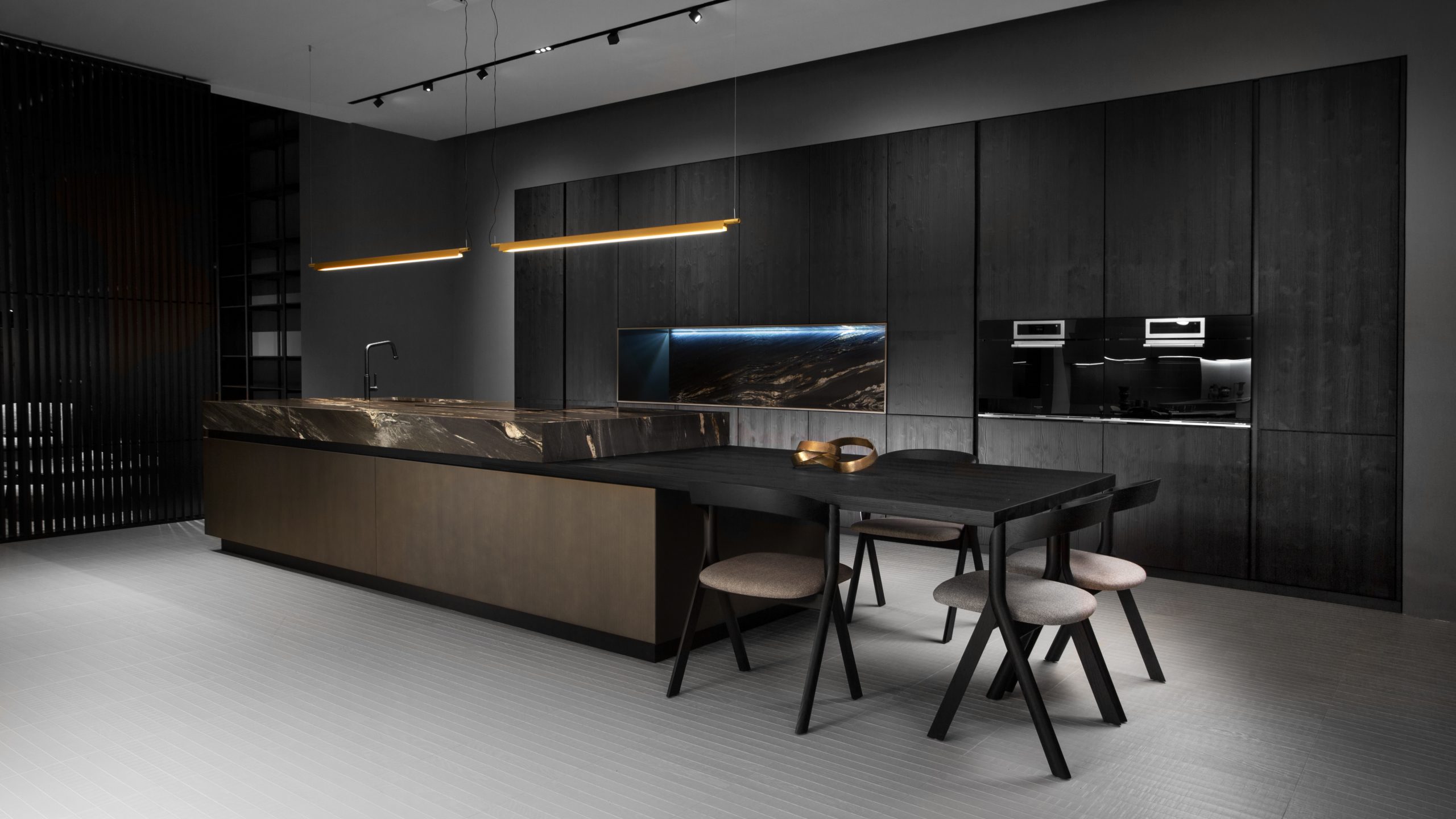June,2024
Flooring for kitchens: tips for making the right choice

How to choose the most suitable flooring for your kitchen
I’m If you're looking for advice on how to choose the most suitable flooring for your kitchen, you're in the right place.
As you may know, selecting kitchen flooring is one of the most important decisions when decorating or modernizing your home. Feeling a bit stressed or lost among the information is common, so don't worry.
When planning your kitchen design, the secret to choosing the right flooring is finding the perfect combination of functionality, safety, and aesthetics. The first step, then, is to find the ideal match between the flooring and the style of the kitchen.
Several factors play a role in choosing kitchen flooring
When you need to choose kitchen flooring, your personal tastes guide you among the various options available, but it's important not to overlook other important aspects.
First of all, the practicality of the flooring is one of the things to consider. A kitchen is an environment where a lot of time is spent and where the floor can get dirty easily.
Having flooring that is easy to clean and maintain is crucial, especially during busy weeks. Materials like porcelain tiles are particularly suitable for environments like kitchens because they resist the chemicals in detergents well and do not absorb stains. The result? It guarantees effortless cleanliness over time. Additionally, this type of flooring is highly resistant to wear and maintains its beauty over time.
Safety is another aspect to keep in mind, especially if the kitchen may find many people. If you are a mom or dad with small children, it's likely that your kids will follow you into the kitchen while you prepare dinner, for example.
Choosing flooring with a matte finish can significantly reduce the risk of slipping, especially when dealing with liquids or foods that can make the surface slippery. An example? Imagine accidentally dropping a slice of bread with Nutella. In these cases, a matte floor helps to maintain greater adherence within the kitchen, reducing the likelihood of accidents when there are a lot of people. This type of finish provides greater adherence and stability underfoot, ensuring a safer and more comfortable environment.
In addition to practicality and safety, aesthetics plays a fundamental role in choosing kitchen flooring. A floor that harmonizes well with the rest of the environment gives the idea of harmony, the feeling that everything is in order. This contributes to creating a welcoming and pleasant atmosphere within your kitchen.
Even the color of the flooring can make a big difference! Light or neutral shades tend to hide dirt better, while dark or white colors require more frequent maintenance. It's important to choose a color that fits your style and the final result you want for your kitchen.
Finally, the size and format of the tiles can influence the overall look of your environment. Large format slabs can give a sense of continuity and breadth, creating a more spacious and modern environment. Conversely, smaller tiles can add detail and visual interest, adding that special touch that never hurts.
In summary, choosing the flooring for your kitchen is a process that requires time and attention to detail. Considering practicality, safety, aesthetics, and the size of the tiles will help you find the ideal flooring to create a functional, safe, and welcoming environment.
Here are some examples of flooring for your kitchen, ready to inspire you in your choice:
Porcelain tile: the most popular material
When it comes to choosing flooring for your kitchen, porcelain tile is a recommended choice. Among the advantages are its durability, ease of cleaning, and the ability to replicate various desired effects, such as wood, terracotta, stone, and marble. You can opt for rectified tiles for a joint-free kitchen or large tiles for a more modern look, although at a higher cost.
Moreover, porcelain tile is particularly suitable as flooring for open spaces. If this is your case, use it uniformly to visually unite different functional areas such as the kitchen, dining area, and living room. Porcelain tile offers a wide range of finishes and formats to meet your style and every need. This allows you to create a kitchen environment that reflects your personal taste and perfectly adapts to your daily needs. Consider porcelain tile for durable, practical, and stylish flooring for your kitchen.

Wood: a timeless classic
Hardwood flooring represents a timeless classic when it comes to kitchen flooring. It is synonymous with elegance and refinement, capable of giving a touch of timeless prestige to any environment. It is particularly recommended in open spaces, where the continuity of the wood flooring creates an atmosphere of spaciousness and harmony between the different zones.
Why should you consider it? Simple!
The versatility of wood should not be underestimated when choosing the type of flooring in a kitchen. Indeed, wood easily adapts to different styles and furnishings, including yours. However, it's important to highlight the delicacy of this material. Especially in the kitchen, where it might be more exposed to impacts and stains. A small tip: the secret lies in regular maintenance. This includes prompt cleaning in case you spill food or beverages and the use of specific products recommended for the care of wood.
With the right attention, hardwood flooring can maintain its timeless charm over the years, adding a touch of warmth and character to your kitchen.
Alternatives that simulate the wood effect
If you would like to have wood in your kitchen but consider it too demanding, there's a solution. Among these is laminate flooring. Some of the advantages are:
- Realism: Porcelain tile with a wood effect faithfully recreates natural wood. You will still have those grains, knots, and the texture that you love so much about wood.
- Resistance: Thanks to the waterproof and durable nature of porcelain tile, wood-effect tiles are highly resistant to moisture, wear, and impacts. They thus become the ideal choice for your kitchen, especially if it will be a heavily used environment.
- Customization: Wood-effect tiles offer a wide and diversified selection of design options. This vastness allows you to adapt it to your tastes.
An alternative is laminate flooring, although not as realistic as wood-effect tiles. It remains an excellent choice for your kitchen for these reasons: - Practicality: It is known for its practicality and ease of installation, making it a convenient choice for those who want a wood-like floor without spending too much money.
- Resistance: Resistant to wear, laminate flooring is ideal for kitchens, where spills can occur. Its sealed surface offers additional protection against scratches and stains.
- Variations: The wide variety of colors, shades, and finishes make laminate flooring suitable for different styles.
Taking the necessary time is important
There is no shortage of ideas for choosing the most suitable kitchen flooring for your style.
Focus on the final result you want to achieve, seeking inspiration on the Internet.
Remember to dedicate the right time so that the final result is in perfect harmony with your preferences and needs.
